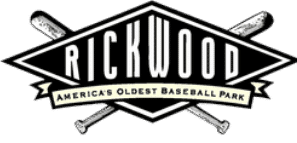THE RICKWOOD LIBRARY: Showdown at Rickwood
March 2020
Jeb Stewart
In Showdown at Rickwood: Ray Caldwell, Dizzy Dean, and the Early Years of America’s Oldest Ball Park, Art Black transports the reader to Birmingham, Alabama of the early 1900s, when the city began to grow into an industrial giant and the population soon increased by nearly 100,000 in only a decade. Black tells the complicated story of the rise of the City of Birmingham, and the origins of the Birmingham Barons as a professional baseball club, which became the pride of the Magic City in the old Southern Association. In 1910, the Barons colorful owner, A.H. “Rick” Woodward, had the vision to construct Rickwood Field, which was the first minor league park to have a grandstand constructed with concrete and steel, and which still stands today.
The story of Showdown is vividly told through the voices of two imaginary characters, who are employed as a writing device, but the history in the pages of the book is real and is based on years of painstaking research. Throughout the book, Black richly creates three-dimensional context within each chapter, as the stories are told against the backdrop of other events such as World War I, the Spanish Flu Epidemic of 1918, and the transatlantic flight of Charles Lindberg.
 Showdown recalls the men who managed the Barons during the early years at Rickwood (Carlton Molesworth, Johnny Dobbs, and Clyde Milan), as well as players, who became heroes to the Birmingham faithful. Some players such as Stuffy Stewart, Yam Yaryan, and Elliot Bigelow were great hitters for the Barons, but would only have relatively short stints in the major leagues. Another, Billy Bancroft, was a local athletic star before he joined the Barons and had great minor league seasons, but never reached the big leagues. Still another player, Pie Traynor, followed his success in Birmingham with a Hall of Fame career for the Pittsburgh Pirates.
Showdown recalls the men who managed the Barons during the early years at Rickwood (Carlton Molesworth, Johnny Dobbs, and Clyde Milan), as well as players, who became heroes to the Birmingham faithful. Some players such as Stuffy Stewart, Yam Yaryan, and Elliot Bigelow were great hitters for the Barons, but would only have relatively short stints in the major leagues. Another, Billy Bancroft, was a local athletic star before he joined the Barons and had great minor league seasons, but never reached the big leagues. Still another player, Pie Traynor, followed his success in Birmingham with a Hall of Fame career for the Pittsburgh Pirates.
Black also tells the stories of four Barons pitchers. The first is Harry Coveleski, a southpaw who had arguably the greatest single season of any Barons pitcher finishing with 21 wins and a 1.21 ERA in 1910. The second is Clarence “Pop Boy” Smith, a brash young man, who talked Carlton Molesworth into giving him a tryout with the Barons and became a great pitcher, but met with a tragic end. The third is Burleigh Grimes, the famous spitballer, who won 37 games for the Barons over two seasons on his way to the Baseball Hall of Fame. Coveleski, Pop Boy Smith, and Grimes were beginning their baseball careers when we meet them in Showdown. The fourth pitcher, Ray Caldwell, was finishing his. He pitched in the major leagues from 1910-21 winning 134 games with an ERA of 3.22.
Caldwell was once struck by lightning during a game; he lived hard and had a reputation as a hard- drinker. The 41-year-old signed with the Barons in 1929. Caldwell, the old man who had lost the zing of his fastball, was the perfect foil to Dizzy Dean. Dean was the 21-year-old ace of the Houston Buffaloes, who enjoyed boasting about himself almost as much as pitching, and would soon become the best pitcher in the National League with the St. Louis Cardinals. Caldwell and Dean met in the first game of the Dixie Series before a record crowd of 20,000 at Rickwood Field. The legendary pitching duel that unfolded between Caldwell and Dean that day became the headline of the greatest baseball game ever played in Birmingham. Even someone who already knows who won the game before reading Showdown feels a visceral tension as each inning unfolds in the book. The drama that was the first game, as well as the entire seven-game series, has been captured for all time thanks to Black’s great research and writing.
Showdown at Rickwood is a treasure trove of history for any fan of baseball or Rickwood Field. Fans will be excited to learn that Black’s follow up book, Fame and Fortune in the Show: Baseball at Rickwood Field and Beyond in the middle 1900s, will be released this April.
